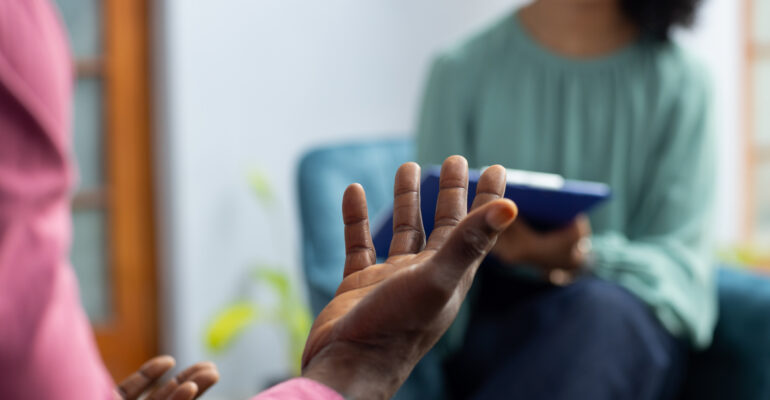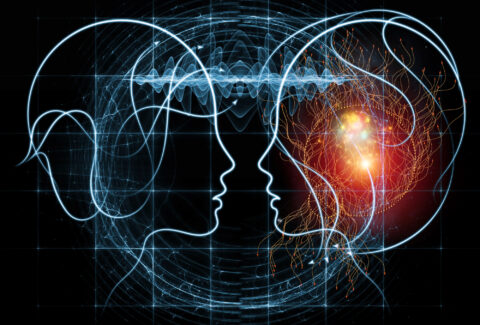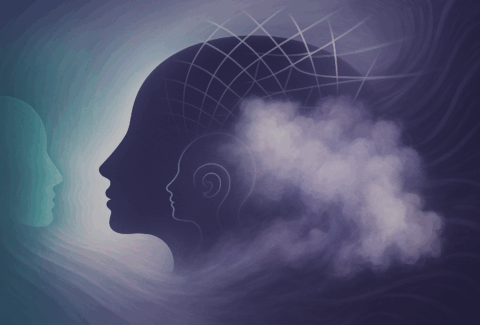Microaggressions and Internalized Racism: A Psychoanalytic Understanding
Microaggressions, subtle forms of discrimination embedded in everyday interactions, may appear insignificant to those who commit them but can be deeply harmful to those who experience them. They represent the often unconscious biases and prejudices that persist in our society.[1] Internalized racism, where individuals unconsciously adopt negative societal views about their own racial or ethnic group, compounds this harm. From a psychoanalytic lens, understanding these phenomena reveals how the unconscious mind processes social prejudices and perpetuates cycles of trauma and self-devaluation.
The Nature of Microaggressions
Microaggressions, coined by psychiatrist Dr. Chester M. Pierce in the 1970s, describe the subtle insults or dismissals often directed at marginalized individuals, particularly people of color.[2] These may be verbal, non-verbal, or environmental and often reflect implicit bias, the unconscious attitudes that people harbor about others based on race, gender, or ethnicity. Microaggressions can manifest in statements like “You’re so articulate” (implying surprise that a person of color speaks well) or assuming that someone from a minority group occupies a subordinate role.
While each microaggression may seem minor, their cumulative impact is profound. For recipients, they serve as constant reminders of their perceived inferiority. Research shows that repeated exposure to microaggressions can lead to increased stress, anxiety, and depression. In the long term, this accumulation of stress has been linked to serious physical and mental health consequences, including hypertension, insomnia, and substance abuse.[3]
Psychoanalytic Insights into Microaggressions
Psychoanalysis offers a rich framework for understanding the unconscious dynamics that drive microaggressions. According to Freudian theory, individuals often repress socially unacceptable thoughts and emotions, projecting them onto others to avoid facing their own discomfort or shame. In the case of racism, individuals may project their internal conflicts and anxieties about race onto others, leading to subtle acts of aggression.[4] For instance, when someone unconsciously fears their own prejudices, they might make a seemingly benign comment that belies deeper feelings of discomfort or superiority.
These projections allow individuals to maintain a self-image of being non-racist while acting out unconscious biases. This is particularly dangerous because it leaves the perpetrator unaware of the harm caused, while the recipient is left to grapple with the emotional and psychological damage. The psychoanalytic concept of denial is also relevant here: individuals may deny their own complicity in systems of racism, thus perpetuating the cycle of microaggressions.
Internalized Racism: A Psychoanalytic View
Internalized racism refers to the unconscious assimilation of negative societal beliefs about one’s own racial group. Victims of racism, over time, may begin to internalize the stereotypes and biases imposed upon them by the dominant culture. From a psychoanalytic perspective, this process can be understood as a form of introjection, where individuals internalize the judgments of others and make them a part of their own self-concept. As a result, the individual begins to experience feelings of self-hatred, inadequacy, and shame, often unconsciously.[5]
Frantz Fanon, a psychoanalyst and philosopher, explored the phenomenon of internalized racism in his seminal work Black Skin, White Masks. He described how colonized individuals internalize the view of themselves as inferior to the colonizers, leading to a fractured identity and profound psychological distress . Fanon’s work underscores how racism operates not only on a societal level but also on the psychological level, shaping the inner worlds of those who experience it.
In psychoanalytic terms, internalized racism creates a split between the ego and the ideal self. The ego is bombarded with societal messages that devalue the individual’s race or ethnicity, creating a dissonance between their authentic self and the internalized image of what they “should” be according to racist stereotypes. This dissonance leads to feelings of inferiority, as the individual believes they cannot live up to societal expectations.
The Harmful Cycle: Microaggressions and Internalized Racism
Microaggressions and internalized racism feed into each other in a destructive cycle.[6] Repeated exposure to microaggressions reinforces the internalized belief that one is inferior, which in turn makes the individual more vulnerable to the psychological effects of microaggressions. This cycle can be particularly damaging because it often occurs unconsciously, leaving individuals struggling with feelings of inadequacy without fully understanding the source of their distress.
For example, a person of color who repeatedly experiences microaggressions at work may begin to doubt their own competence, internalizing the implicit message that they do not belong or are not capable. This doubt may manifest as self-sabotage, where the individual unconsciously undermines their own success, or as overcompensation, where they work excessively hard to prove their worth. In either case, the individual is trapped in a cycle of self-devaluation, constantly striving to meet an unattainable ideal imposed by a racist society.
Breaking the Cycle: Psychoanalytic Interventions
Psychoanalytic therapy can play a crucial role in breaking the cycle of microaggressions and internalized racism by helping individuals bring their unconscious beliefs and feelings into conscious awareness.[7] Through the therapeutic process, individuals can explore the origins of their internalized racism, understand how it affects their self-concept, and begin to dismantle the harmful beliefs they have internalized.
One of the central goals of psychoanalytic therapy is to help individuals develop a more integrated and authentic sense of self. For those struggling with internalized racism, this means confronting the split between the ego and the ideal self and working to reconcile these parts of the psyche. By acknowledging and processing the unconscious feelings of shame, anger, and fear associated with internalized racism, individuals can begin to heal from its damaging effects.
Conclusion
Microaggressions and internalized racism are deeply intertwined, perpetuating cycles of harm that affect both individuals and society.[8] From a psychoanalytic perspective, these phenomena are driven by unconscious processes, such as projection, introjection, and denial, that shape our interactions with others and with ourselves. By bringing these unconscious dynamics into conscious awareness, psychoanalysis offers a pathway for healing and transformation, both on the individual level and in the broader societal context.
As we move forward, it is essential to continue exploring these issues from a psychoanalytic lens, not only to provide healing for those who suffer from internalized racism but also to challenge the unconscious biases that drive microaggressions. Only by understanding and addressing these unconscious processes can we begin to dismantle the psychological structures that support racism in all its forms.
[1] Spencer, Michael S. “Microaggressions and social work practice, education, and research.” Journal of Ethnic & Cultural Diversity in Social Work 26.1-2 (2017): 1-5.
[2] Williams, Monnica T., Matthew D. Skinta, and Renée Martin-Willett. “After Pierce and Sue: A revised racial microaggressions taxonomy.” Perspectives on psychological science 16.5 (2021): 991-1007.
[3] Friedlaender, Christina. “On microaggressions: Cumulative harm and individual responsibility.” Hypatia 33.1 (2018): 5-21.
[4] Taffel, Ron. “The myth of micro-aggression.” Contemporary Psychoanalysis 56.2-3 (2020): 375-393.
[5] Layton, Lynne, and Marianna Leavy-Sperounis. Toward a social psychoanalysis: Culture, character, and normative unconscious processes. Routledge, 2020.
[6] Pérez Huber, Lindsay, and Daniel G. Solorzano. “Racial microaggressions as a tool for critical race research.” Race Ethnicity and Education 18.3 (2015): 297-320.
[7] David, E. J. R., Jessica Petalio, and Maria C. Crouch. “Microaggressions and internalized oppression: Intrapersonal, interpersonal, and institutional impacts of “Internalized Microaggressions.” Microaggression theory: Influence and implications (2019).
[8] Wallerstein, Robert S. “The Goals of Psychoanalysis; A Survey of Analytic Viewpoints.” Journal of the American Psychoanalytic Association 13.4 (1965): 748-770.









